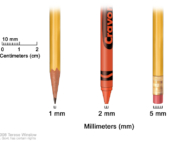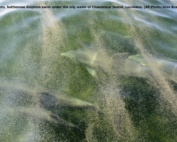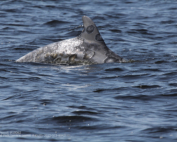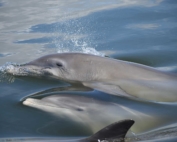Dolphin Health and Physiology
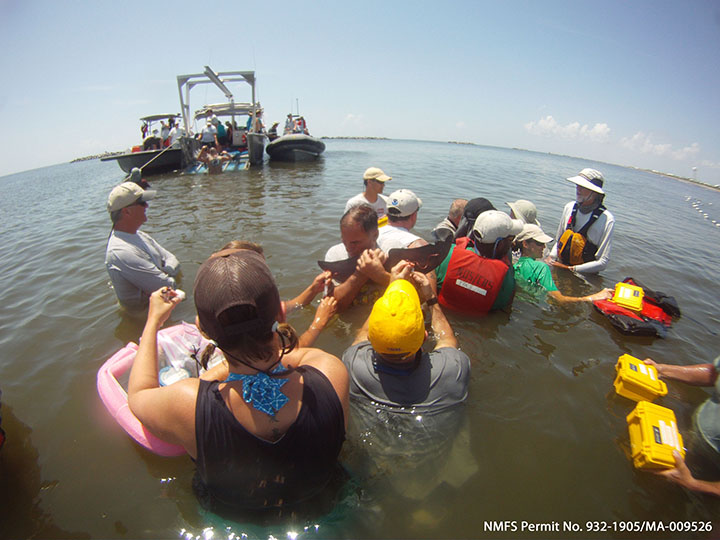
SDRP conducts the world’s longest-running study of a wild dolphin population, initiated in 1970. Information available from five decades of research on the multi-decadal, multi-generational, year-round resident community of individually identifiable bottlenose dolphins of Sarasota Bay established this as a unique natural laboratory for learning about the biology, behavior, ecology, social structure, health, and communication of dolphins, as well as the effects of human activities on them.
Long-term study is crucial for understanding the lives of members of long-lived species such as bottlenose dolphins, and for being able to detect trends in populations relative to changes in their environment. Knowing the long-term geographic range of a population unit allows the measurement of exposure to threats, which in turn facilitates mitigation, including direct interventions.
The ability to observe identifiable individual dolphins of known sex, age, and familial relationships through all of their life history milestones and associated transitions in behavioral and social patterns, to collect data on health and condition, and to then document their reproductive success and cause of death is rare in cetacean research.
The SDRP was a pioneer in the development of catch-and-release dolphin health assessment approaches and techniques, starting in 1988. Small groups of dolphins are selected and encircled with a net in shallow water, where teams of veterinarians and biologists examine them and obtain samples and measurements before releasing them on-site.
This approach has been applied elsewhere to at-risk populations of bottlenose dolphins, including those impacted by the Deepwater Horizon oil spill. Significant differences found in comparisons to the Sarasota Bay reference population have identified human impacts on health and reproduction.
We also use some of these techniques to rescue dolphins suffering from life-threatening entanglements in fishing line and other gear.
Opportunities to study physiology have occurred in association with periodic health assessments in Sarasota Bay, and have included studies of metabolic rates, temperature regulation, and lung function, among other topics. Health and physiology research is conducted under a series of Scientific Research Permits issued by NOAA’s National Marine Fisheries Service, and annual renewals of Institutional Animal Care and Use Committee approvals by Mote Marine Laboratory.
Dolphins and Microplastics
Study Finds Evidence that Dolphins are Ingesting Microplastics A new study in the peer-reviewed journal Frontiers in Marine Science has found evidence that members of the Sarasota Bay dolphin community are inadvertently ingesting
DWH: 12 Years On
A Dozen Years After the Deepwater Horizon Disaster, We're Still Documenting Impacts to Dolphins April 2022 marks the anniversary of the Deepwater Horizon (DWH) oil spill in the Gulf of
When Dolphins and Freshwater Mix
What Happens When Dolphins and Freshwater Mix? Prolonged exposure to freshwater is linked to adverse health conditions, immune deficiencies, and even dolphin deaths, but there’s still a lot we don’t
Exploring Microbiomes
Exploring Microbiomes The science of understanding microbiomes has received increasing attention over the past few decades, especially in the context of understanding animal health. Microbomes are a collection of microorganisms
